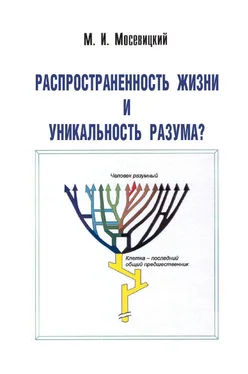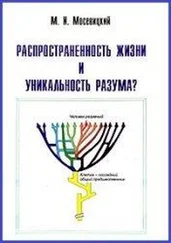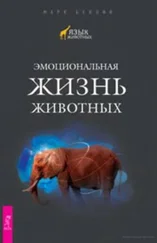Vellai T. and Vida G. (1999) The origin of eukaryotes: the difference between procaryotic and eukaryotic cells. Proc. R. Soc. Lond. B, 266, 1571―1577.
Verhage M. et al. (2000) Synaptic assembly of the brain in the absence of neurotransmitter secretion. Science, 287, 864―869.
Vigilant L. et al. (1991) African populations and the evolution of human mitochondrial DNA. Science, 253, 1503―1507.
Vincent W. F. et al. (2000) Ice shelf microbial ecosystems in the high arctic and implications for life on snowball earth. Naturwissenschaften, 87, 137―141.
Visser M. et al. (2003) Traversable wormholes with arbitrarily small energy condition violations. Phys. Rev. Lett., 90, 201102.
Vogel G. (1998) Finding lifes limits. Science, 282, 1399.
Voight B. F. et al. (2006) A map of recent positive selection in the human genome.
PLoS Biol., 4, 0446―0458. Von Bloh W. (2003) On the possibility of Earth-type habitable planets in the
55 Cancri system. Astrobiology, 3, 681―688.
Wachtershauser G. (1988) Before enzymes and templates: theory of surface metabolism. Microbiol. Rev., 52, 452―484.
Wachtershauser G. (1994) Life in a ligand sphere. Proc. Natl. Acad. Sci. USA, 91, 4283―4287.
Wachtershauser G. (2003) From pre-cells to Eukarya ― a tale of two lipids. Mol. Microbiol. 47, 13―22.
Wachtershauser G. (2007) On the chemistry and evolution of the pioneer organism. Chem. Biodivers, 4, 584―602.
Walsh M. M. (1992) Microfossils and possible microfossils from the Early Archean Onverwacht Group, Barberton Mountain Land, South Africa. Precambrian Res., 54, 271―293.
Walsh M. M. (2004) Evaluation of early Archean volcaniclastic and volcanic flow rocks as possible sites for carbonaceous fossil microbes. Astrobiology, 4, 429―437.
Walsh M. M. and Lowe D. R. (1985) Filamentous microfossils from the 3,500-Myr old Onverwacht Group, Barberton Mountain Land, South Africa. Nature, 314, 530―532.
Ward P. D. et al. (2005) Abrupt and gradual extinction among Late Permian land vertebrates in the Karoo basin, South Africa. Science, 307, 709―714.
Ward P. D. (2006) Impact from the deep. Sci. Am., 295, 64―71.
Warmflash D. and Weiss B. (2005) Did life come from another world? Sci. Am., 293, 64―71.
Watanabe T. et al. (2006) Identification and characterization of two novel classes of small RNAs in the mouse germline: retrotransposon-derived siRNAs in oocytes and germline small RNAs in testes. Genes Dev., 20, 1732―1743.
Waters M. et al. (1997) Diring-Yariakh: A lower paleolithic site in Central Siberia. Science, 275, 1281―1284.
Watkins W. S. et al. (2001) Patterns of ancestral human diversity: an analysis of Alu-insertion and restriction-site polymorphisms. Am. J. Hum. Genet., 68, 738―752.
Watkins W. S. et al. (2003) Genetic variation among world populations: inferences from 100 Alu insertion polymorphisms. Genome Res., 13, 1607―1618.
Watson J. D. (1963) The involvment of RNA in the synthesis of proteins. Science, 140, 17―26.
Watson J. D. and Crick F. H. C. (1953a) A structure for deoxyribose nucleic acid. Nature, 171, 737―738.
Watson J. D. and Crick F. H. C. (1953b) Genetic implications of the structure of deoxyribonucleic acid. Nature, 171, 964―967.
Weaver T. D. et al. (2007) Were neandertal and modern human cranial differences produced by natural selection or genetic drift? J. Hum. Evol., 53, 135―145.
Weiss B. P. et al. (2000) A low temperature transfer of ALH84001 from Mars to Earth. Science, 290, 791―795.
Weiss B. P. et al. (2004) Magnetic tests for magnetosome chains in Martian meteorite ALH84001. Proc. Natl. Acad. Sci. USA, 101, 8281―8284.
Westheimer F. H. (1986) Polyribonucleic acids as enzymes. Nature, 319, 534―535. Westheimer F. H. (1987) Why nature chose phosphates. Science, 235, 1173―1178. White R. V. (2002) Earth™s biggest fiwhodunnitfl: unrevelling the clues in the case of the end-Permian mass extinction. Philos. Transact. A. Math. Phys. Eng. Sci., 360, 2963―2985.
White T. D. et al. (2003) Pleistocene Homo sapiens from Middle Awash, Ethiopia. Nature, 423, 742―747.
White T. D. et al. (2006) Asa Issie, Aramis and the origin of Australopithecus. Nature, 440, 883―889.
Witherspoon D. J. et al. (2006) Human population genetic structure and diversity inferred from polymorphic L1(LINE-1) and Alu insertions. Hum. Hered., 62, 30―46.
Whitfield K. E. et al. (2000) The effect of race and health-related factors on naming and memory. The MacArthur studies of successful aging. J. Aging Health, 12, 69―89.
Whitman W. B. et al. (1999) What archaea have to tell biologists. Genetics, 152, 1245―1248.
Wible J. R. et al. (2007) Cretaceous eutherial and Laurasian origin for placentar mammals near the K/T boundary. Nature, 447, 1003―1006.
Wilde S. A. et al. (2001) Evidence from detrital zircons for the existence of continental crust and oceans on the Earth 4.4 Gyr ago. Nature, 409, 175―178.
Willerslev E. and Cooper A. (2005) Ancient DNA. Proc. Biol. Sci., 272, 3―16. W―se C. R. (1979) A proposal concerning the origin of life on the planet Earth.
J. Mol. Evol., 13, 95―101.
W―se C. R. et al. (1990) Towards a natural system of organisms: proposal for the
domains archae, bacteria and eucaria. Proc. Natl. Acad. Sci. USA, 87, 4576―4579.
W―se C. R. (1998) The universal ancestor. Proc. Natl. Acad. Sci. USA, 95, 6854―6859. W―se C. R. (2002) On the evolution of cells. Proc. Natl. Acad. Sci. USA, 99, 8742―8747.
Wolbach W. S. et al. (1988) Global fire at the Cretaceous-Tertiary boundary. Nature, 334, 665―690.
Wolfe J. A. (1991) Palaeobotanical evidence for a June fiimpact winterfl at the Cretaceous/Tertiary boundary. Nature, 352, 420―422.
Wolpoff M. H. et al. (2001) Modern human ancestry at the peripheries: a test of the replacement theory. Science, 291, 293―297.
Woods R. P. et al. (2006) Normal variants of Microcephalin and ASPM do not account for brain size variability. Hum. Mol. Genet., 15, 2025―2029.
Wright I. P. et al. (1989) Organic materials in a martian meteorite. Nature, 340, 220―222.
Wu H. et al. (2007) Transducer of regulated CREB and late phase long-term synaptic potentiation. FEBS J., 274, 3218―3223.
Wu T. and Orgel L. E. (1991) Disulfide-linked oligonucleotide phosphorothioates: novel analogues of nucleic acids. J. Mol. Evol., 32, 274―277.
Yamagata Y. et al. (1991) Volcanic production of polyphosphates and its relevance to prebiotic evolution. Nature 352, 516―519.
Xing J. et al. (2007) Mobile DNA elements in primate and human evolution. Am. J. Phys. Anthropol., 45, 2―19.
Yamei H. et al. (2000) Mid-Pleistocene Acheulean-like stone technology of the Bose basin, South China. Science, 287, 1622―1626.
Yao S. et al. (1998) Selective amplificaton by auto– and cross-catalysis in a replicating peptide system. Nature, 396, 447―450.
Yarus M. (1988) A specific amino acid binding site composed of RNA. Science, 240, 751―1758.
Yu F. et al. (2001) Methyl-CpG-binding protein 2 represses LINE-1 expression and retrotransposition but not Alu transcription. Nucleic Acids Res., 29, 4493―4501.
Yu F. et al. (2007) Comment on fiOngoing adaptive evolution of ASPM, a brain size determinant in Homo sapiensfl. Science, 316, 370.
Yu X. J. et al. (2006) Detecting lineage-specific adaptive evolution of brain-expressed genes in human using rhesus macaque as outgroup. Genomics, 88, 745―751.
Yoon H. S. et al. (2004) A molecular timeline for the origin of photosynthetic eukaryotes. Mol. Biol. Evol., 21, 809―818.
Zahnle K. and Grinspoon D. (1990) Comet dust as a sourse of amino acids at the Cretaceous/Tertiary boundary. Nature, 348, 157―160.
Zhao M. and Bada J. L. (1989) Extraterrestrial amino acids in Cretaceous/Tertriary boundary sediments at Stevns Klint, Denmark. Nature, 339, 463―465.
Читать дальше
Конец ознакомительного отрывка
Купить книгу










